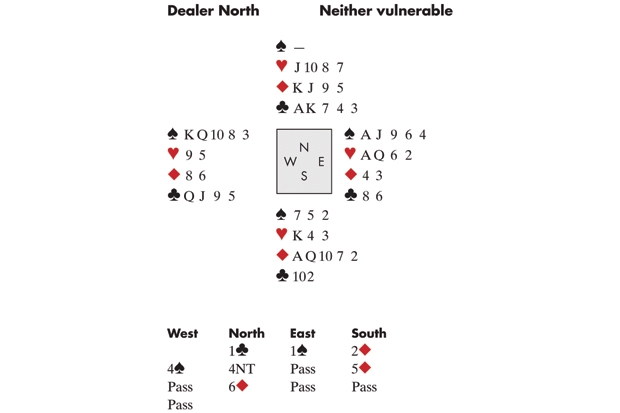The more I watch top-class players bid their hands, the more I abide by the philosophy: points, schmoints! Obviously, we all evaluate our hands to a certain extent — indeed, a large extent — according to how many points we hold. From our very earliest days as players we are taught this rule of thumb: that we and our partners need a combined holding of 25 points for game and at least 30 for slam. But many of the social players I know are completely in thrall to this way of evaluating their hands: they base all their decisions about whether to enter the auction, or raise their partner, or bid on to game, and so on, purely according to what their mental pocket calculator tells them. By contrast, better players have a far greater appreciation of distribution and the usefulness (or not) of where their honour cards lie. Or perhaps, you could argue, they just need fewer points than the rest of us to succeed!
Here are Tony Forrester and David Gold in action during last year’s Camrose Trophy (the home internationals), breezily bidding to slam on a combined 21-count.
West led his ♠K and Gold ruffed in dummy. After a long think, he cashed dummy’s ace and king of clubs and played a third club, ruffing low when East discarded a spade. Gold ruffed another spade and played the ♥10 — East won the ace to play a trump. Gold won that in hand and ruffed his last spade loser. Now he played the ♥J and let it run when it was not covered (it wouldn’t have helped East to cover as West’s ♥9 was pinned). Lastly, he ruffed another club, drew the last trumps and claimed.






Comments